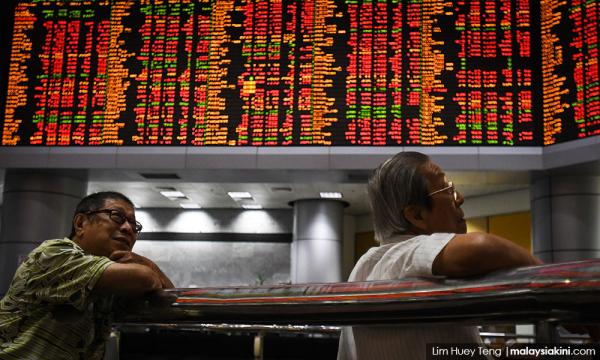The prospects for Malaysia’s current account will be shaped by global and domestic demand, as well as commodity prices, according to the Economic Outlook report.
Released by the Ministry of Finance, the report noted that the current account surplus is expected to narrow to RM28 billion or 1.9 per cent of gross national income (GNI) in 2020.
The goods surplus is expected to be restricted to RM123.4 billion with import growth outpacing exports.
Meanwhile, the services account is projected to record a wider deficit of RM25 billion in 2020, as deficits in transportation and other services accounts are expected to be higher than the surplus in the travel account.
The deficit in primary income account is projected to widen to RM50 billion as the recovery in exports is expected to translate into higher repatriations of profits and dividends.
The profits and dividends would be brought by multinational companies operating in Malaysia, particularly in the electrics and electronics as well as oil and gas-related industries.
The wider deficit is also due to the net outflows of compensation to foreign professional skills and expertise.
Likewise, profits and dividends accruing to Malaysian companies investing abroad are expected to increase on account of improving economic outlook," said the report.
Higher outward remittances at RM39. 6 billion will more than offset inward remittances, contributing to the continued deficit in the secondary income account.
Malaysia’s external sector is expected to remain resilient despite continued uncertainties in the global environment.
Overall in 2019, the increase in net exports of goods and services is expected to contribute to the widening of the current account surplus to RM43. 4 billion or 2.9 per cent of GNI.

For now, Malaysia's growth momentum in 2019 and 2020 is expected to remain steady backed by strong fundamentals and diversified economic structure despite heightening external uncertainties.
According to the report, domestic demand will anchor growth with the external factor expanding moderately. against the backdrop of a challenging global environment.
It said household spending would continue to be driven by stable labour market conditions and benign inflation, while investment activity will be supported by capacity expansion in the services and manufacturing sectors.
Labour productivity increased to RM91, 793 or 2.5 per cent during the first half of 2019.
Following various strategies outlined under the Malaysian Productivity Blueprint, as well as efforts to improve and enhance the adoption of the Productivity-Linked Wage System (PLWS) among employers.
Labour productivity is expected to increase 2.6 per cent to RM94, 400 throughout the year.
In 2020, labour productivity is projected to reach RM97,000 or expanding at 2.8 per cent due to the growth in services (3.7 per cent), followed by construction (3.4 per cent) and manufacturing (2.6 per cent) sectors.
While the economy is expected to remain resilient, the risks to the outlook still on the downside, arising mainly from moderating global growth and trade activities as well as volatility in the financial and commodity markets, said the report.
Moving forward, various measures will be undertaken in sustaining growth momentum and ensuring people’s well-being.
These include the revival of strategic projects and moving up the value chain through 5G technology and Industrial Revolution 4.0, the report noted.
In addition, efforts to promote industries that have comparative advantages such as tourism and commodity-related downstream activities are expected to support growth in the near-term.
- Bernama


